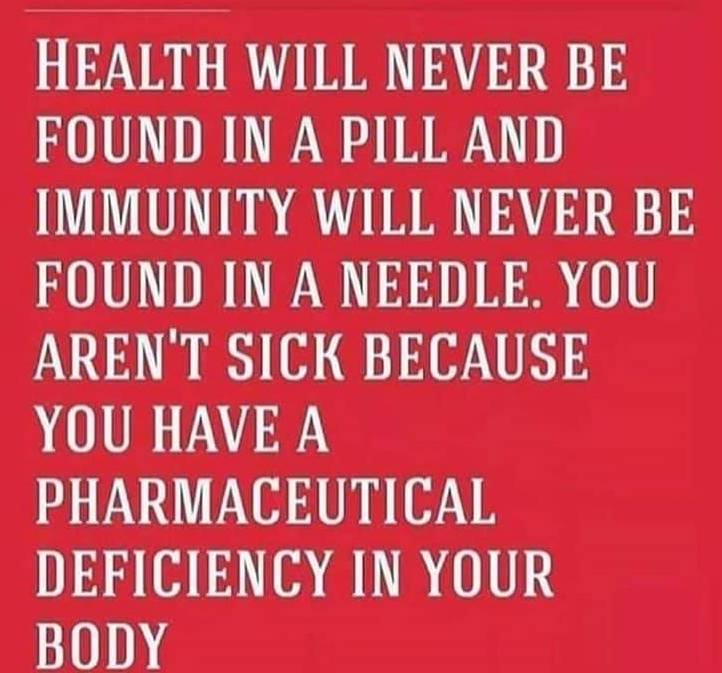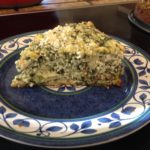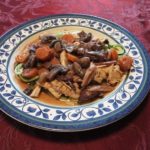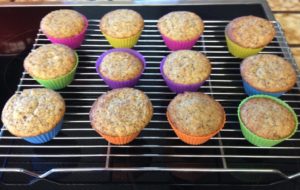Archive for the ‘Uncategorized’ Category
November News
Great and uplifting info.
October News

Coronavirus Pt3 – Testing: What are we doing? What does it mean?
TOPICS:antibody testingcivil disobedienceCOVID19RT-PCR testingSARS-CoV-2serology

Posted By: VaxxterAdmin2 05/18/2020
by Dr. Sherri Tenpenny, DO, AOBNMM, ABIHM*
In 1965, scientists identified the first human coronavirus; it was associated with the common cold. The Coronavirus family, named for their crown-like appearance, currently includes 36 viruses. Within that group, there are 4 common viruses that have been causing infection in humans for more than sixty years. In addition, three pandemic coronaviruses that can infect humans: SARS, MERS, and now, SARS-CoV-2.
As the news of deaths in China, South Korea, Italy, and Iran began to saturate every form of media 24/7, we became familiar with a new term: COVID-19. To be clear, the name of the newly identified coronavirus is SARS-CoV-2; short for Severe Acute Respiratory Syndrome Coronavirus-2. This virus’s symptoms include fever, cough, chest pain, and shortness of breath. These are the complex of symptoms that form the diagnosis of COVID-19.
Public Health Emergency
The Trump administration declared a public health emergency on January 31, 2020. Then on February 2, they placed a ban on the entry of most travelers who had recently been in China. On February 4, Alex Azar, the Secretary of Health and Human Services (HHS) issued a declaration of public health emergency and activated the Public Readiness and Emergency Preparedness Act, otherwise known as the PREP Act. This nefarious legislation provides complete protection of manufacturers from liability for all products, technologies, biologics, or any vaccine developed as a medical countermeasure against COVID-19. For those nervously waiting for the vaccine to become available, be sure to understand the PREP Act before rushing to the get in line.
Calls for testing – to see if a person is or isn’t infected – began soon after the emergency was declared. But performing those tests was initially slow due to an inadequate number of test kits. As the kits became available, those developed by the CDC had a defect: The reagents reacted to the negative control sample, making the test inaccurate and the kits unusable.
In various countries, thousands of test kits purchased from China were found to be contaminated with the SARS-CoV-2 viruses. No one really knows how that happened, but theories spread like wildfire. Could the test kit infect the person receiving testing? Or, did it mean the test would return a false-positive result, driving up the numbers of those said to have an infection so those in power could implement stronger lockdowns and accelerate the hockey-stick unemployment rates? There are no adequate answers for any of those questions.
Mandatory Testing … of what?
Authorities claim that testing is important for public health officials to assess if their mitigation efforts – “shelter in place” and “social distancing” and “wearing a mask” – are making a difference to “flatten the curve.” Officials also claim that testing is necessary to know how many persons have an infection within a community and to understand the nature of how coronaviruses spread.
Are these reasons sufficient to give up our health freedom and our personal rights, being tested and shamed in public?
Despite the challenges with test kits, testing began. By the end of March 2020, more than 1 million people had been tested across the US. By May 9, the number tested had grown to over 8.7M. Testing methods include a swab of the nasal passages or by inserting a long, uncomfortable swab through the nose to scrape the back of the throat. Specimens have also been obtained bronchoalveolar lavage, from sputum, and from stool specimens.
The call for mandatory testing has been gathering steam and becoming ever more onerous. In Washington state, Governor Inslee has declared:
Individuals that refuse to cooperate with contact tracers and/or refuse testing, those individuals will not be allowed to leave their homes to purchase basic necessities such as groceries and/or prescriptions. Those persons will need to make arrangements through friends, family, or state provided “family support” personnel.
But what do the results really mean?
Who Should Receive Testing
On May 8, 2020, the CDC has listed specific priorities for when testing should be done. As of May 16, more than 11-million samples have been collected and more than 3700 specimens have not yet been evaluated.
High Priority
- Hospitalized patients with symptoms
- Healthcare facility workers, workers in living settings, and first responders with symptoms
- Residents in long-term care facilities or other congregate living settings, including prisons and shelters, with symptoms
Priority
- Persons with symptoms of potential COVID-19 infection, including fever, cough, shortness of breath, chills, muscle pain, new loss of taste or smell, vomiting or diarrhea, and/or sore throat
- Persons without symptoms who are prioritized by health departments or clinicians, for any reason, including but not limited to public health monitoring, sentinel surveillance, or screening of asymptomatic individuals according to state and local plans.
Read that last priority again: That means virtually everyone can be required to get a test.
Is that a violation of your personal rights? And, if you submit to testing, what does a “positive test” actually mean?
Types of Testing: RT-PCR
PCR, short for polymerase chain reaction, is a highly specific laboratory technique. The key to understanding PCR testing is that PCR can identify an individual specific virus within a viral family.
However, a PCR was created to identify DNA viruses; the SARS-CoV2 virus is an RNA virus. Therefore, multiple steps are necessary to “magnify” the amount of genetic material in the specimen. Researchers used a method called RT-PCR, reverse transcription-polymerase chain reaction, to specifically identify the SARS-CoV-2 virus. It’s a complicated process. To read more about it, go here and here.
If a nasal or a blood sample contains a tiny snip of RNA from the SARS-CoV-2 virus, RT-PCR can identify it. This leads to a high probability that the person has had exposure to the SARS-CoV-2 virus.
However – and this is important – a positive RT-PCR test result does not necessarily indicate a full virus is present. The virus must be fully intact to cross from person-to-person and cause illness.
RT-PCR Testing: The Importance of Timing
Even if a person has had all the symptoms associated with a coronavirus infection or has had exposure to persons who have had a COVID-19 diagnosis, the probability of an RT-PCR test being positive decreases with the number of days past the onset of symptoms.
According to a study done by Paul Wikramaratna and others:
- For a nasal swab, the percentage chance of a positive test declines from about 94% on day 0 to about 67% by day 10. By day 31, there is only a 2% chance of a positive result.
- For a throat swab, the percentage chance of a positive test declines from about 88% on day 0 to about 47% by day 10. By day 31, there is only a 1% chance of a positive result.
In other words, the longer the time frame between the onset of symptoms and the time a person tests for COVID-19, the more likely the test will be negative.
The Purpose of Repeat Testing
Repeat testing of persons who have a negative test may (eventually) confirm the presence of viral RNA, but this is impractical. Additionally, repeated testing of the same person can lead to even more confusing results. The test may go from negative, to positive, then back to negative again as the immune system clears out the coronavirus infection and moves to recovery.
And what makes this testing even more confusing is that the FDA admits that “The detection of viral RNA by RT-PCR does not necessarily equate with an infectious virus.”
Let’s break that down:
You’ve had all the symptoms of COVID19, but your RT-PCR test for SARS-CoV-2 is negative.
- Does that mean you’re “good to go” – you can go to work, go to school or you can travel? OR…
- Does that mean your influenza-like illness was caused by some other pathogen, possibly one of the four coronaviruses that have been in circulation for 60 years? OR…
- Does that mean the result is a false-negative and you still have the infection, but it isn’t detectable by current tests? OR…
- Does that mean it was a sample that was inadequately taken due to the faulty technique by the technician? OR…
- Does that mean you have not been exposed, and you are susceptible to contracting the infection, and you need to stay in quarantine?
So, what does a “positive” test actually mean? And that’s the problem:
No one knows for sure.
Read more here: https://vaxxter.com/covid19-testing-what-are-we-doing-what-does-it-mean/
Cochrane Collaboration: Flu Vaccines of No Benefit
October 10, 2012
This is the season that many Americans are advised-even pressured–to get flu shots. Indeed, flu shots are being hawked at every drug store chain…
But what does the evidence show about the effectiveness of the flu vaccine when vaccinated and unvaccinated groups are compared ?
Well, the finding of a comprehensive review of 50 published reports by the highly credible Cochrane Collaboration should discourage healthy people from getting the flu shot:
“The results of this review seem to discourage the utilisation of vaccination against influenza in healthy adults as a routine public health measure.
As healthy adults have a low risk of complications due to respiratory disease, the use of the vaccine may be only advised as an individual protection measure against symptoms in specific cases.”
Specifically, the EVIDENCE REFUTES the claims that the flu vaccine prevents the flu;
the EVIDENCE REFUTES the claim that it prevents viral transmission in healthy adults;
and the EVIDENCE REFUTES the claim that the vaccine prevents complications and “saves lives.”
The EVIDENCE shows little or no benefit for influenza vaccinations.
“This review includes 15 out of 36 trials funded by industry (four had no funding declaration). An earlier systematic review of 274 influenza vaccine studies published up to 2007 found industry funded studies were published in more prestigious journals and cited more than other studies independently from methodological quality and size. Studies funded from public sources were significantly less likely to report conclusions favorable to the vaccines. The review showed that reliable evidence on influenza vaccines is thin but there is evidence of widespread manipulation of conclusions and spurious notoriety of the studies. The content and conclusions of this review should be interpreted in light of this finding.”
Repeat:
“…industry funded studies were published in more prestigious journals and cited more than other studies…”
“…reliable evidence on influenza vaccines is thin…”
“…there is evidence of widespread manipulation of conclusions…”
Most assuredly, the “content and conclusions of this review should be interpreted in light of this finding”!
So, it would be prudent to be highly skeptical about the pronouncements and recommendations of public health officials about the value or necessity of various vaccines.
There are hidden financial conflicts of interest.
See, Part III of AHRP’s examination of America’s Healthcare Crisis https://www.ahrp.org/cms/content/view/873/9/
with links to a detailed analysis of the intricate web of financial conflicts of interest that dominate public health vaccine policies.
Vera Sharav
~~~~~~~~~~~~~~~~~~~~~~~~~~~~~~~~~
See: http://onlinelibrary.wiley.com/doi/10.1002/14651858.CD001269.pub4/abstract
The Cochrane Collaboration (Wiley publication)
Vaccines for preventing Influenza in Healthy Adults
Tom Jefferson, Carlo Di Pietrantonj ,Alessandro Rivetti ,Ghada A Bawazeer ,Lubna A Al-Ansary ,Eliana Ferroni
Published Online: 7 JUL 2010
We included 50 reports. Forty (59 sub-studies) were clinical trials of over 70,000 people. Eight were comparative non-RCTs and assessed serious harms. Two were reports of harms which could not be introduced in the data analysis. In the relatively uncommon circumstance of vaccine matching the viral circulating strain and high circulation, 4% of unvaccinated people versus 1% of vaccinated people developed influenza symptoms (risk difference (RD) 3%, 95% confidence interval (CI) 2% to 5%). The corresponding figures for poor vaccine matching were 2% and 1% (RD 1, 95% CI 0% to 3%). These differences were not likely to be due to chance. Vaccination had a modest effect on time off work and had no effect on hospital admissions or complication rates. Inactivated vaccines caused local harms and an estimated 1.6 additional cases of Guillain-Barré Syndrome per million vaccinations. The harms evidence base is limited.
Authors’ conclusions
Influenza vaccines have a modest effect in reducing influenza symptoms and working days lost. There is no evidence that they affect complications, such as pneumonia, or transmission.
WARNING:
This review includes 15 out of 36 trials funded by industry (four had no funding declaration). An earlier systematic review of 274 influenza vaccine studies published up to 2007 found industry funded studies were published in more prestigious journals and cited more than other studies independently from methodological quality and size. Studies funded from public sources were significantly less likely to report conclusions favorable to the vaccines. The review showed that reliable evidence on influenza vaccines is thin but there is evidence of widespread manipulation of conclusions and spurious notoriety of the studies. The content and conclusions of this review should be interpreted in light of this finding.
Plain language summary
Over 200 viruses cause influenza and influenza-like illness which produce the same symptoms (fever, headache, aches and pains, cough and runny noses). Without laboratory tests, doctors cannot tell the two illnesses apart. Both last for days and rarely lead to death or serious illness. At best, vaccines might be effective against only influenza A and B, which represent about 10% of all circulating viruses. Each year, the World Health Organization recommends which viral strains should be included in vaccinations for the forthcoming season.
Authors of this review assessed all trials that compared vaccinated people with unvaccinated people. The combined results of these trials showed that under ideal conditions (vaccine completely matching circulating viral configuration) 33 healthy adults need to be vaccinated to avoid one set of influenza symptoms. In average conditions (partially matching vaccine) 100 people need to be vaccinated to avoid one set of influenza symptoms. Vaccine use did not affect the number of people hospitalised or working days lost but caused one case of Guillian-Barré syndrome (a major neurological condition leading to paralysis) for every one million vaccinations. Fifteen of the 36 trials were funded by vaccine companies and four had no funding declaration.
Our results may be an optimistic estimate because company-sponsored influenza vaccines trials tend to produce results favorable to their products and some of the evidence comes from trials carried out in ideal viral circulation and matching conditions and because the harms evidence base is limited..
Read more here: https://ahrp.org/cochrane-collaboration-flu-vaccines-of-no-benefit/
THE DAMNING CHINA COVID TIMELINE
THE DAMNING CHINA COVID TIMELINE
White House Coronavirus Task Force Advisor, Dr. Scott Atlas, has recently come under fire from Microsoft founder, Bill Gates. Del does a deep dive into the COVID timeline, shining light on Bill Gates’ intimate ties to the World Health Organization, Dr. Tony Fauci and China. As the rest of the world spirals into economic ruin, China’s economy is booming; is this a power play by the communist country?
#Fauci #BillGates #China #WHO #Atlas #Coronavirus #COVID19 #WearAMask #Election2020
Watch the video here:
Spinach Bacon Quiche

Spinach Bacon Quiche
Our chickens have been laying eggs like crazy this spring so I was looking for some good recipes. I have to say, this is the best quiche recipe I’ve ever had and the family agrees. This is my version from the excellent cookbook, Low-Carbing Among Friends, Vol 1 – link below. It’s full of great low carb, gluten free and Keto recipes and I use it all the time.
Almond Parmesan Crust:
2/3 cup ground almonds or almond meal, preferably organic
1/3 cup grated organic Parmesan cheese 2 tbsp organic butter, melted
1 organic pastured egg
Filling:
6 organic bacon slices
1 small organic onion, finely chopped
1, 10 oz package frozen organic spinach
8 oz organic cream cheese, softened
1 cup organic sour cream
5 organic, pastured eggs, beaten
4 oz organic feta cheese
1/4 cup organic grated Parmesan cheese
Directions:
Almond Parmesan Crust: In medium bowl, combine ground almonds, Parmesan cheese, melted butter and egg. Using plastic wrap, press crust into 9-inch springform pan or 10” deep dish pie pan. Bake in 350°F (180°C) oven 10 minutes.
Filling: In large skillet, cook bacon until it gets somewhat crisp. Set aside to drain on paper towels. In bacon fat, cook onions over medium heat until soft.
Squeeze liquid out of spinach and add to onions along with bacon.
In food processor or in bowl with electric mixer, process cream cheese. Add sour cream and process. Add eggs one at a time, while processing, until smooth. Stir in feta cheese and Parmesan cheese and process again. Pour mixture over vegetables and bacon; stir to combine well. Pour over prepared crust.
Bake in 350°F oven 50 minutes, or until set. Allow to stand 10 minutes before cutting. Sprinkle with extra Parmesan cheese, if desired. Enjoy!
GMOs in the News

GMO’s in the News 2015
Here’s our first new update for 2015.
Below is a new book coming out next week that I am buying. Link below.
Some other important news as well.
Mom
The Massive Fraud Behind GMOs Exposed
by COLIN TODHUNTER
This is not what the GMO industry wanted to see: banner headlines today in major newspapers and across the internet exposing the fraud behind GMOs. But this constitutes much more than a PR nightmare. The story behind the headlines shakes the very foundations upon which the industry is built.
‘Altered Genes, Twisted Truth’ is a new book by the US public interest lawyer Steve Druker. The book is the result of more than 15 years of intensive research and investigation by Druker, who initiated a lawsuit against the US Food and Drug Administration (FDA) that forced it to divulge its files on GM foods. Those files revealed that GM foods first achieved commercialisation in 1992 but only because the FDA covered up the extensive warnings of its own scientists about their dangers, lied about the facts and then violated federal food safety law by permitting these foods to be marketed without having been proven safe through standard testing.
If the FDA had heeded its own experts’ advice and publicly acknowledged their warnings that GM foods entailed higher risks than their conventional counterparts, Druker says that the GM food venture would have imploded and never gained traction anywhere.
He also argues that that many well-placed scientists have repeatedly issued misleading statements about GM foods, and so have leading scientific institutions such as the US National Academy of Sciences, the American Association for the Advancement of Science and the UK’s Royal Society.
Druker states that contrary to the claims of biotech advocates, humans have indeed been harmed by consuming the output of genetic engineering. The technology’s first ingestible product (a food supplement of the essential amino acid, L-tryptophan) caused dozens of deaths and seriously sickened thousands of people (permanently disabling many of them). Moreover, the evidence points to the genetic alteration as the most likely cause of the unusual contamination that rendered the supplement toxic.
He explains that laboratory animals have also suffered from eating products of genetic engineering, and well-conducted tests with GM crops have yielded many troubling results, including intestinal abnormalities, liver disturbances, and impaired immune systems.
Read the rest here: http://www.counterpunch.org/2015/03/06/the-massive-fraud-behind-gmos-exposed/
New Study: Huge Increase in US Chronic Diseases Linked to Glyphosate Herbicides
A new correlation study published on Friday in the Journal of Organic Systems has linked the world’s number one herbicide, glyphosate, to a huge increase in the incidence of chronic diseases across the United States.
In the most detailed analysis yet performed on the correlation between the use of glyphosate-based pesticides and rates of chronic diseases, a team including Dr. Nancy Swanson and the President of the International Federation of Organic Agriculture Movements (IFOAM), Andre Leu, identified a serious link between the increase in the use of glyphosate in the U.S. and diseases such as diabetes, obesity, lipoprotein metabolism disorder, Alzheimer’s, senile dementia, Parkinson’s, multiple sclerosis and autism.
What is Glyphosate?
PCBs, DDT and Agent Orange all had very harmful effects on women, men and children across the Globe in the 20th Century. Glyphosate-based herbicides have been identified as the next dangerous widely used chemical on this list. It is time for some real action to be taken to find out the full extent of the harm being caused to the environment and human health by glyphosate the world’s number one weed killer.
Glyphosate, or N-(phosphonomethyl)glycine, is a broad-spectrum herbicide, meaning it kills all plant life. Glyphosate was developed by John E. Franz of Monsanto Company. It was first introduced in 1974.
Glyphosate-containing herbicides are now the top-selling herbicides in the world and are sold under trademarks such as Monsanto’s ‘Roundup’.
Numerous glyphosate-based herbicide formulations (e.g. Roundup, Clearout 41) are now produced by at least 100 manufacturers worldwide.
Glyphosate herbicides are used by farmers to kill weeds in crop fields. But their use is not restricted to farming. Public authorities spray them along roads, on pavements, and in public parks to control weeds. Even home gardeners use them. They are sold in supermarkets and garden centres.
The new study states:
“Within the last 20 years there has been an alarming increase in serious illnesses in the US, along with a marked decrease in life expectancy (Bezruchka, 2012). The Centers for Disease Control and Prevention (CDC) estimates that the cost of diabetes and diabetes-related treatment was approximately $116 billion dollars in 2007. Estimated costs related to obesity were $147 billion in 2008 and cardiovascular diseases and stroke were $475.3 billion in 2009. Health care expenditures in the US totaled 2.2 trillion dollars in 2007 (CDC, 2013a). The onset of serious illness is appearing in increasingly younger cohorts. The US leads the world in the increase in deaths due to neurological diseases between 1979-81 and 2004-06 for the 55-65 age group (Pritchard et al., 2013).
“These mental disorder deaths are more typical of the over 65 age group. There have been similar findings for obesity, asthma, behavior and learning problems, and chronic disease in children and young adults (Van Cleave et al., 2010). Type II diabetes in youth is being called an epidemic (Rosenbloom et al., 1999). The rate of chronic disease in the entire US population has been dramatically increasing with an estimated 25% of the US population suffering from multiple chronic diseases (Autoimmunity Research Foundation, 2012). These findings suggest environmental triggers rather than genetic or age-related causes.
“During this same time period, there has been an exponential increase in the amount of glyphosate applied to food crops and in the percentage of GE food crops planted (Benbrook, 2012). We undertook a study to see if correlations existed between the rise of GE crops, the associated glyphosate use and the rise in chronic disease in the US.”
Read the rest and find the link to the paper here:
Kellogg’s Froot Loops Tests Positive For GMOs and Weedkiller
In 2013, GMO Free USA sent a sample of Froot Loops to a certified lab to test for the presence of GMO material. The quantitative PCR test verified, by DNA analysis, that 100% of the corn in the Froot Loops was GMO, containing DNA sequences known to be present in insecticide producing Bt and Roundup Ready corn. The soy contained DNA sequences known to be present in Roundup Ready GMO soy. This year we plan to continue testing for the presence of GMOs in various food products and now we have expanded our testing to include glyphosate. GMO Free USA plans to further expand testing to include 2,4-D, dicamba, atrazine, and neonicotinoid insecticides.
Read more here:
http://www.gmofreeusa.org/food-testing/kelloggs/kelloggs-froot-loops/
End double standards in evaluating GMO safety studies – say scientists
Europe’s food safety agency only criticises studies that find risk, new analysis shows
ENSSER Press release
The controversy about the Séralini et al. study, which reported negative health effects of Monsanto’s NK603 GM maize and Roundup herbicide fed to rats over the long term,[1] is still going on. According to a new review published in Environmental Sciences Europe, the European Food Safety Authority (EFSA) used unscientific double standards to dismiss the Séralini study on genetically modified (GM) maize.[2]
The publication of this latest review comes just days after the retraction of the Séralini paper by Elsevier, the publisher of Food and Chemical Toxicology (FCT), on the unprecedented grounds of the “inconclusive” nature of some of the findings. ENSSER condemned the retraction[3] .
The Séralini study triggered an immediate storm of criticism by scientists and organisations, most of whom are known for their support of GMOs and their pleas for sweeping deregulation of GM plants in the EU and relaxation or even abandonment of risk assessment standards.[4]
Retrospective and selective application of new standards by EFSA
In September 2012, the European Commission asked EFSA to review the Séralini study. EFSA did so by retrospectively applying new standards released in 2011 to scientific work that Séralini planned and started in 2008.[5] EFSA concluded that the Séralini study was “inadequate”.[6]
But EFSA did not apply these same standards retrospectively to the original rat feeding study by Monsanto, even though the underlying design for the Monsanto study was later repeated by Seralini.[7] The Monsanto study concluded that this same GM maize was safe to eat, resulting in the approval for consumption of this GM crop by millions of animals and EU citizens in 2005.
EFSA review undermined the basic principles of science
Hartmut Meyer, one of the authors of the new review, said, “Use of such double standards is a common response from scientists calling for GMO deregulation and, somewhat surprisingly, also from some government authorities, to studies that show negative environmental and health effects of GMOs. Only those studies that find problems are subjected to excessive scrutiny and rejected as defective. This approach appears to be a tactic to avoid dealing with ‘inconvenient’ results, whilst selecting for ‘convenient’ results.”
The new review then applied the same criteria used by EFSA to reject the Séralini study to 21 other 1-2-year feeding studies published in peer-reviewed scientific journals during the last 20 years. Those studies did not test feed derived from GM plants but mostly chemicals, used the same strain of rat, similar low numbers of tested animals and likewise modified protocols that extended or diverged to some degree from the strict OECD protocols and EFSA criteria as both Seralini and Monsanto did.
Restore scientific principles of objectivity
Angelika Hilbeck, the second author of the new review and chair of the European Network of Scientists for Social and Environmental Responsibility (ENSSER), said, “ENSSER wants to see scientific objectivity restored. We are calling for an end to the use of double standards, particularly by EFSA, in the evaluation of scientific research on substances that may pose risks to public health. We need a reasoned, respectful debate with the aim of reaching a consensus on the evaluation standards that must be consistently applied to all toxicity and carcinogenicity trials, regardless of whether they have findings that are ‘inconvenient’ for certain parties. EFSA should take the lead here.”
“It’s time to stop selectively attacking methods and begin to deal with the results.”
Double standards used to claim GMO safety
Another example of selective scrutiny of study methods in order to avoid dealing with the results is a review of GMO safety studies conducted by Snell et al. (2012)[8]. In their review of 24 animal feeding trials with GM plant-derived feed, the authors noticed severe methodological shortcomings in a majority of the analysed publications, e.g. isogenic lines as controls were only used in 10 studies. However, Snell et al. used these shortcomings as arguments to dismiss those studies stating negative effects – but not those stating safety. Based on this asymmetrical, result-triggered approach, the review incorrectly concludes that no health hazards were found in 24 analysed publications.
Hazelnut Blackberry Jam Muffins
I had some muffins similar to these at our local health food store. They were so good that I was determined to replicate them. I’ve had a bag of hazelnut meal in my freezer for a year and didn’t know what to do with it. I also had some homemade sugarless blackberry jam that needed using up.
This recipe was a winner!
Ingredients
- 1 ½ cup hazelnut meal/flour
- ½ cup almond flour/almond meal
- 2 teaspoons baking powder
- 1/4 teaspoon Celtic Sea salt
- 1/2 cup (1 stick) organic butter, melted
- 4 organic, pastured eggs
- 1/3 cup water
- Sweetener to taste — about 1/3 to 1/2 cup usually works well – I use Swerve
- ¼ cup organic jam – I use sugarless (sweetened with stevia or erythratol) and homemade
- Prep Time: 15 minutes
- Cook Time: 20 -25 minutes
- Yield: 12 Muffins
Preparation
1) Preheat oven to 350 F.
2) Butter a muffin tin. You can also use paper or silicone muffin liners.
3) Mix dry ingredients together well.
4) Add wet ingredients and mix thoroughly. Add dry ingredients to wet and mix well.
5) Fill each muffin cup about 1/3 with batter, then put about 1 tsp of jam on top of that, then fill all muffins evenly with batter
6) Bake for about 20 to 25 minutes until lightly browned and a toothpick comes out clean.
Enjoy!
Italian Cheese Pie – gluten free

Italian Cheese Pie
I had bought some ricotta cheese, and ended up not using it for the original recipe so searched around online and found this.
It was very good and you could use just lemon or orange. The first time I made it I used one orange and all of the zest and juice – it was great.
2lbs organic ricotta cheese
1 organic orange, zested + 1 tbsp. orange juice
1 organic lemon, zested + 1 tbsp lemon juice
2tsp guar/xanthan gum mix or 6 tbsp. almond flour
1T good organic vanilla
4 organic pastured eggs
1 ½ cups sweetener of choice: rapadura, organic sugar, erythritol, stevia equivalent.
- Preheat the oven to 350 degrees.
- Grease a 9 inch pie plate {glass is good}.
- Combine the cheese, orange and lemon zest and juice, guar/xanthan or almond flour, and vanilla in a bowl. {I use my food processor}.
- In another bowl, beat the eggs, then slowly add the sweetener and continue to beat eggs until foamy {I used my whisk}.
- Put the egg mixture into the cheese mixture, and mix well, and pour into prepared pie plate
- Bake in oven for 1 hour or until filling is firm.
- Cool and slice for serving (I like it cold)
Enjoy!
Slow Cooker Coq Au Vin

Slow Cooker Coq Au Vin
This is a great winter stew. Very rich and satisfying too.
Browning the bacon, chicken and vegetables briefly before adding them to the crock pot creates deep rich flavors in both the chicken and sauce.
We served it over zucchini noodles, you could also have it with crusty bread, potato’s, or cauliflower rice or mashed cauliflower.
Ingredients:
1 whole organic chicken, cut up
Celtic salt and pepper to taste
4 slices organic bacon, cut into 1” strips
1 (12-ounce) package organic white or baby bella mushrooms, quartered
2 organic carrots, chopped
1 medium organic yellow onion, chopped
2 cloves organic garlic, chopped
1 ¾ cup red wine (I used Pinot Noir)
¼ cup Cognac, Brandy or
1 tsp dried oregano
½ tsp dried thyme, or a large sprig fresh
1 bay leaf
Directions:
In a bowl, mix together wine, cognac, tomato paste and dried herbs and set aside.
Heat a large nonstick skillet over medium heat. Add bacon and cook until golden and just crisp, 3 minutes. Drain bacon on paper towels and set aside.
Add chicken to bacon drippings and cook until lightly browned all over, about 3 minutes per side. Transfer chicken to a large plate as done and set aside.
Then in the same pan, add all the vegetables and cook until they just begin to soften. Transfer vegetables to crock pot. Arrange chicken on top. Sprinkle bacon over chicken. Pour wine/ herb mixture over the tops. . Cover and cook on low for 8 hours. Season with salt and pepper, then serve.
The Best Sweet Potato Pie

The Best Sweet Potato Pie
I found this recipe around 10 years ago and tweaked it to make it gluten free, and you can make it sugar free as well. It’s SO good and what we’re serving for dessert this Thanksgiving.
To make a gluten free crust, put in your food processor:
2 cups almond flour
dash salt
2 tablespoons coconut oil or pastured lard
1 organic pastured egg
Pulse the processor until the dough forms a ball and then press into your pan.
For the Pie:
Ingredients:
2 pounds organic sweet potato’s
1/3 cup melted organic butter
¾ cup organic sugar (or swerve, or stevia equivalent)
3 organic eggs
¼ cup organic half and half or cream (or coconut cream/milk)
1 tsp organic lemon extract
Dash or organic cinnamon
Directions:
Wash potatoes and put them in a pot with cold water to cover. Bring to a boil and cook until soft, about 45 minutes.
Pour off hot water and then run cold water over the potatoes and drain, twice.
While hot, Peel potatoes and put them in your mixer bowl. Mix or whip until smooth. Add melted butter and stir until mixed in.
Add sweetener, taste for sweetness and add more if needed. Add eggs and stir until mixed in.
Add half and half, lemon extract and cinnamon. Mix well.
Pour mixture into pie shell and bake at 350° for an hour or until set.
Cool and enjoy! Serve with whipped cream if desired.
Read more, great Fat Tuesday posts here: http://realfoodforager.com/fat-tuesday-november-25-2014/
Read more, great Real Food Wednesday posts here: http://kellythekitchenkop.com/real-food-wednesday-11262014-real-food-recipe-blog-carnival.html
Gluten Free Zucchini Fries

I still have almost a dozen zucchinis in the refrigerator from our garden. I’ve been having a hard time decidimg what to do with them, that we haven’t done too many times before and decided to try oven fries. They are very good. Gluten free and low carb too!
Ingredients:
2 organic Zucchini
1 tablespoon course Sea Salt
2 Organic Pastured Eggs
½ cup Almonds Meal
½ cup Organic Grated Parmesan Cheese
½ tsp. Italian Seasoning or any herbs you’d like
Directions:
Preheat oven to 425° and line a baking sheet with parchment paper. You don’t have to, but I put a cooling rack on top of the parchment paper as shown in the picture. It kept the fries lifted up and I didn’t need to turn them over.
Cut zucchini into 3-inch lengths, then cut each piece into 9 fries. Place zucchini fries into a colander and sprinkle with salt. Let the zucchini pieces drain for at least 1 hour to remove excess liquid
Beat eggs in a shallow bowl. Mix almonds, Parmesan cheese, and Italian seasoning in a second shallow bowl. Rinse salt off zucchini and pat dry with paper towels.
Dip each zucchini piece into beaten egg and roll in the almond coating. Place coated fries on prepared baking sheet.
Bake in the preheated oven until the zucchini are tender and the coating is crisp and browned, about 25 minutes, turning them halfway through cooking time.
I served it with a little ranch dressing on the side. Enjoy!
Why we have a wood chip Garden

Why we have a Wood Chip Garden
I’ve been gardening for a long time. I really love working outside with the plants and getting delicious homegrown produce and herbs is a big bonus. I’ve gardened in so many different ways from raised beds to large pots when I was renting and couldn’t dig up the lawn. A few years ago I heard about this movie called Back to Eden. It’s about Paul Gautschi who’s an organic gardener from Washington State. He lives in an area that has very dry summers and came up with this great mulching system to keep the plants moist.
There have been many books about mulch and how good it is for your garden but most of the one’s I’ve seen, like Ruth Stouts books use straw for mulch. We live in Northern California where we have very dry summers so when we moved here a few years ago and I was getting ready to start a new garden from scratch, I knew I wanted to try Paul’s system.
We needed to have a number of trees cut down to make a spot for our garden as our property is heavily wooded so part of what we looked for was someone with a really big chipper. We found a great company and they chipped most of the trees that came down in the garden area. The rest we chopped into firewood. We did a layer of cardboard to cover the weeds, then a layer of cow manure, then a layer of compost then at least six inches of wood chips.
We got our garden finished in early April of 2013. Ideally, you are supposed to get your wood garden finished six months before you plant but it didn’t work out for us that way. I planted about a quarter of the garden out in June and figured it would be an experiment as it was too soon to expect good results.
It did really well! We got tomatoes (including a great volunteer plant from the compost we used under the chips), eggplant, pumpkins and one great melon plant. I planted a few things over the winter like garlic and cabbage, but as we got so little rain and I didn’t water at all, it just did okay.
This summer I went for it. Planted a lot and it’s been just amazing. We have irrigation water so I am supplementing water but only an hour or so, twice a week. I don’t think I make a garden any other way. The chips absorb moisture if they get to wet, and keep moisture when it’s dry.
Here’s the link to the movie and the picture is our garden this past August.
You can watch Back to Eden for free at the link below.
http://www.backtoedenfilm.com/#movie
